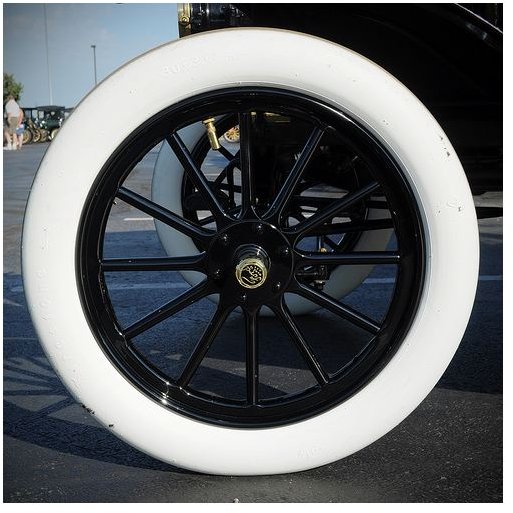A Critique of the Autocratic Leadership Style
What Is Autocratic Leadership?
[caption id="" align=“alignnone” width=“600”]
Autocratic leadership is a classical leadership approach, and the corporate equivalent of dictatorship or tyranny. This leadership style is marked with the leader having complete authority and the followers obeying the instructions of the leader without questioning and without receiving an explanation or rationale for such instructions. This leadership style bases itself on Douglas McGregor’s Theory X that considers employees as inherently lazy and disliking work, and assumes they seek to avoid work as much as possible. Theory X advocates close supervision and comprehensive control systems, reinforced by a hierarchical structure and a narrow span of control. Following is a critique of autocratic leaderships styles, along with its pros and cons. Image Credit: flickr.com/lumaxart
Characteristics
The autocratic leader typically follows certain characteristics including:
-
- Retains all power, authority, and control, and reserves the right to make all decisions.
- Distrust of their subordinate’s ability, and closely supervise and control people under them.
- Involve themselves in detailed day-to-day activities, and rarely delegate or empower subordinates.
- Adopts one-way communication. They do not consult with subordinates or give them a chance to provide their opinions, no matter the potential benefit of such inputs.
- Assumes that employee motivation comes not through empowerment, but by creating a structured set of rewards and punishments.
- Get work done by issuing threats and punishments and evoking fear.
- The primary concern of autocratic leaders remains dealing with the work at hand and not on developmental activities.
- Assume full responsibility and take full credit for the work.
Advantages
Autocratic leadership creates a centralized chain of command with heavy involvement of the leader in all areas of operation. This leads to the formation of a hub and spoke type of organizational structure that helps in many ways, such as:
-
- Getting things done quickly
- Improving communication and logistics.
- Better response to changes in the external environment.
- Putting forth a more coordinated approach toward fulfilling organizational goals.
- Anticipating problems in advance, and better realization of consequences of an action.
Proponents of this leadership style advocate it as an ideal method to extract high performance from employees without putting them under stress. They insist the close supervision and monitoring leads to a faster pace of work with less slack, where the leader assumes full responsibility for the decisions and actions, ultimately creating reduced stress for subordinates.
Disadvantages
The advantages of autocratic leadership notwithstanding, this leadership style has born the brunt of heavy criticism in the last three decades, where the move toward systems thinking and empowering people have led to the perception of “autocratic” and “centralized command” as negative and undesirable traits. Theory Y, the antithesis of Theory X assumes that ambitious and self-motivated employees enjoy their mental and physical work duties. Such employees possess the ability for creative problem solving, but most organizations under-utilize their talents. Theory Y holds that employees seek and accept responsibility and exercise self-control and self-direction in accomplishing objectives, provided the conditions remain congenial for such an approach. The autocratic style remains wholly unsuited for such Theory Y oriented workforces and does not rank among the modern leadership styles in a changing world.
Criticisms Levied Against Autocratic Leadership

The major criticisms levied against the autocratic style include the following:
-
- Contrary to claims of close supervision with detailed instructions to reduce stress and improve productivity, research suggests that such actions actually demotivate employees, and cause them to becoming tense, fearful, or resentful.
- Lack of involvement from the employee in the decision making process leads to employees not assuming ownership of their work, contributing to low morale, lack of commitment, and manifesting in high turnover, absenteeism, and work stoppage.
- The heavily centralized command of autocratic leadership style ensures that the system depends entirely on the leader. If the leader is strong, capable, competent and just, the organization functions smoothly, and if the leader is weak, incompetent, or has low ethical and moral standards, the entire organization suffers for the sake of a single leader.
- All power vested with the leader leads to risk of leaders with low moral fiber exploiting employees, indulging in favoritism and discrimination, and the like.
- Weak leaders tend to make decisions based on ego rather than sound management principles, and punish employees who dare to disagree with such decisions.
- The leader reserving the right to make all decisions leads to subordinates becoming heavily dependent on the leader. The team thereby becomes useless in running operations if they lose contact with their leader, and absence of the leader leads to total collapse and shutdown of operations.
- The one sided communication flow in an autocratic leadership style restricts the creative and leadership skills of the employees and prevents their development. This harms the organization as well, for the employees remain incapable of assuming greater responsibilities, or to perform anything outside the routine.
- The autocratic leader, by taking all responsibility and involved heavily in day to day operations, remains forced to work at full capacity, leading to stress and other health problems.
- Autocratic leaders usually remain unpopular and damage working relationships with colleagues. This leadership style is unsuited to build trusting relationships.
Image Credit: flickr.com/David Reber
Application of Autocratic Leadership Style
A critique of the autocratic style reveals that it remains best suited in certain situations such as:
-
- Occasions when the situation requires a strong centralized control with detailed orders and instructions, such as in the military or during surgery.
- When leading an extremely large group, such as in assembly line factories, where the wide span of control not only makes it impossible but also counterproductive to elicit the views of all employees.
- When followers are new or inexperienced, or lack the qualifications, skills, or talent to respond to any participative leadership styles, or remain unmotivated, and non committed workers.
- During occasions of contingencies, emergencies and other situations warranting on the spot decisions.
- When dealing or negotiating with external agencies or departments.
This leadership style on the whole remains a short-term or quick fix approach to management. The ability to make decisions faster, while helping the organization in the short term, actually “de-skills” the workforce leading to poor decision-making capability and productivity in the long run. This leadership style survives by default because it comes naturally to most leaders, especially in times of low morale or insubordination.
References
-
- Tannenbaum, R. & Schmidt, W. How to Choose a leadership Pattern. Harvard Business Review, May-June 1973, No. 73311
- Vecchio, Robert, P. (1998). Leadership: Understanding the Dynamics of Power and Influence in Organizations. University of Notre Dame Press
- Newstrom, John W. & Davis, Keith (1993). Organizational Behavior: Human Behavior at Work. New York: McGraw-Hill.
